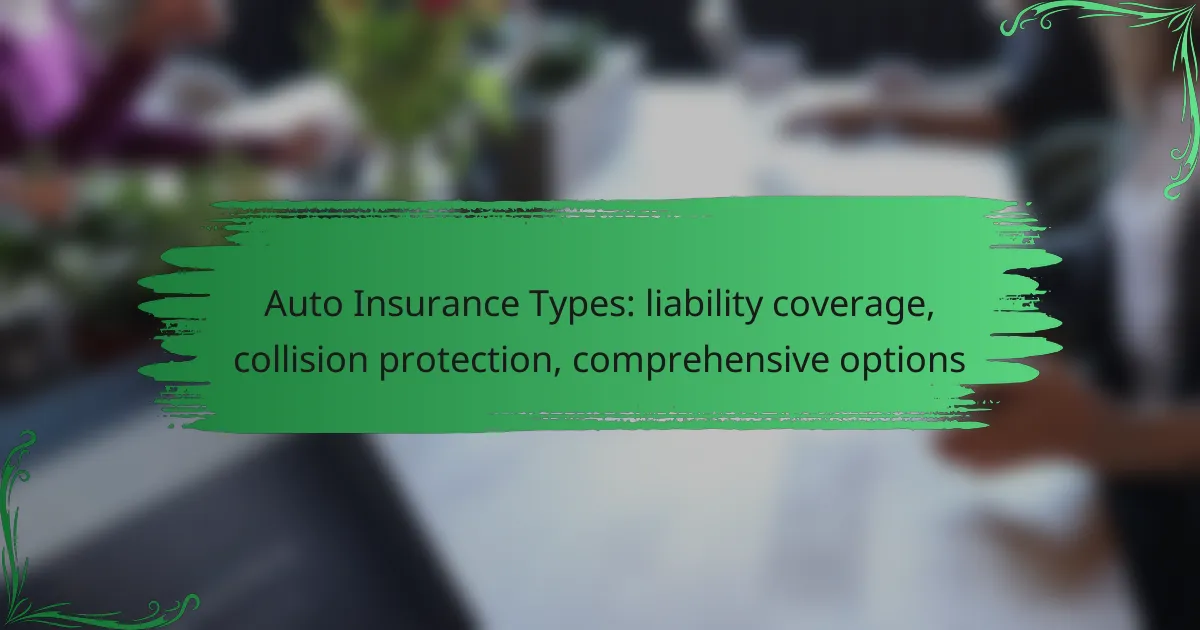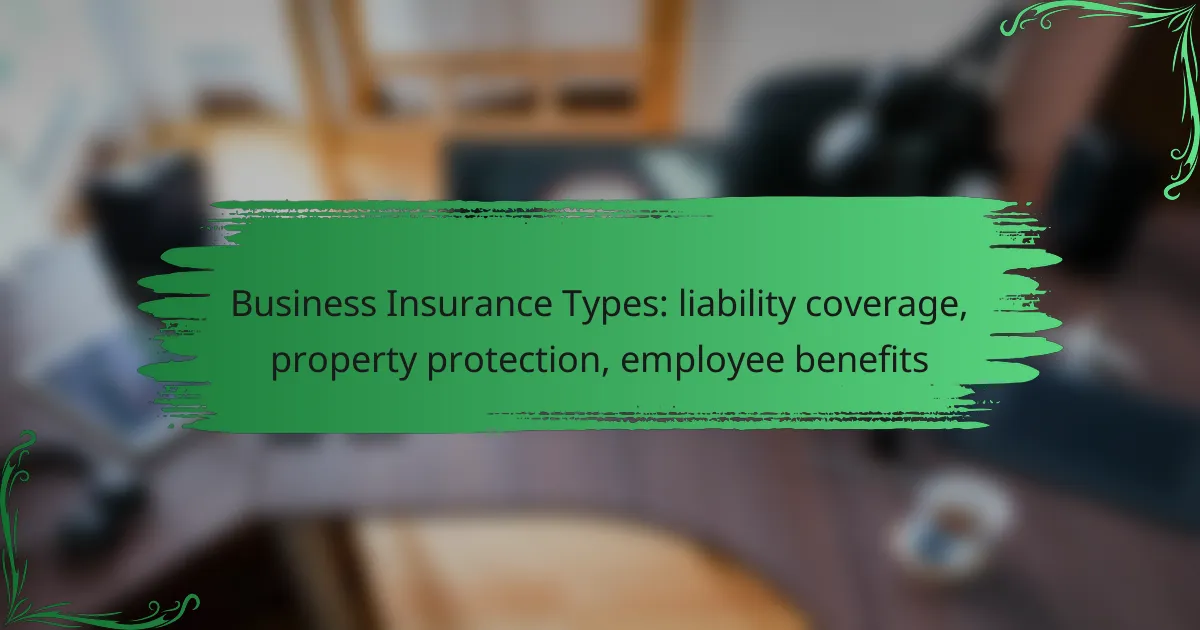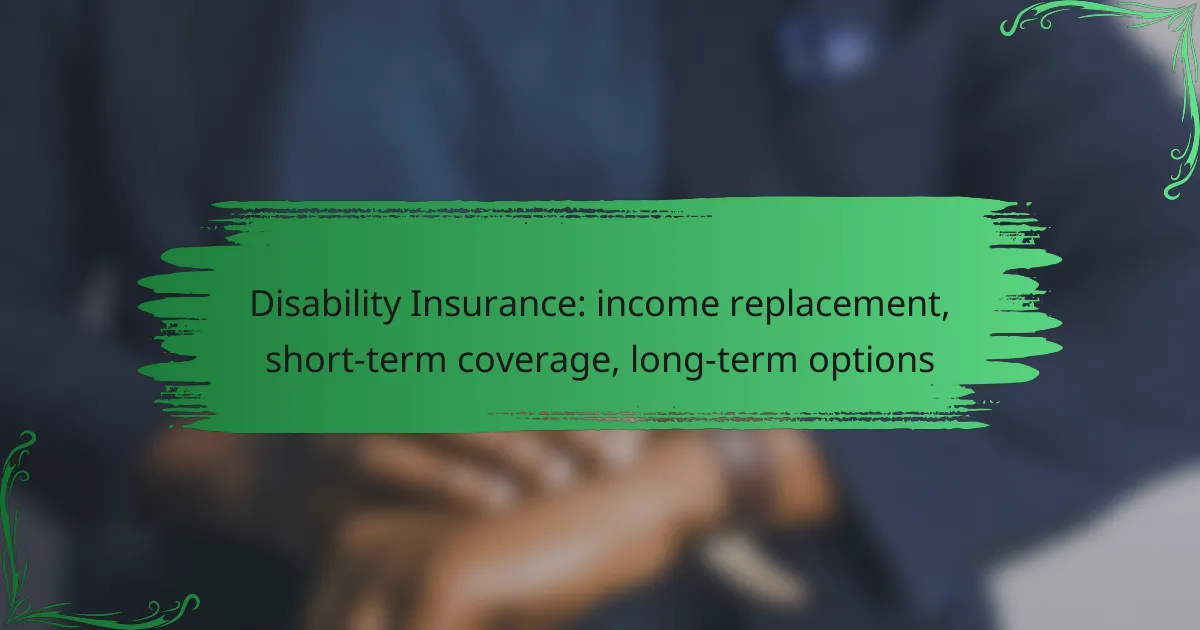Auto insurance in the UK includes various types designed to meet different needs, such as liability coverage, collision protection, and comprehensive options. Each type serves a specific purpose, helping drivers navigate their responsibilities and protect their assets in the event of an accident or damage.
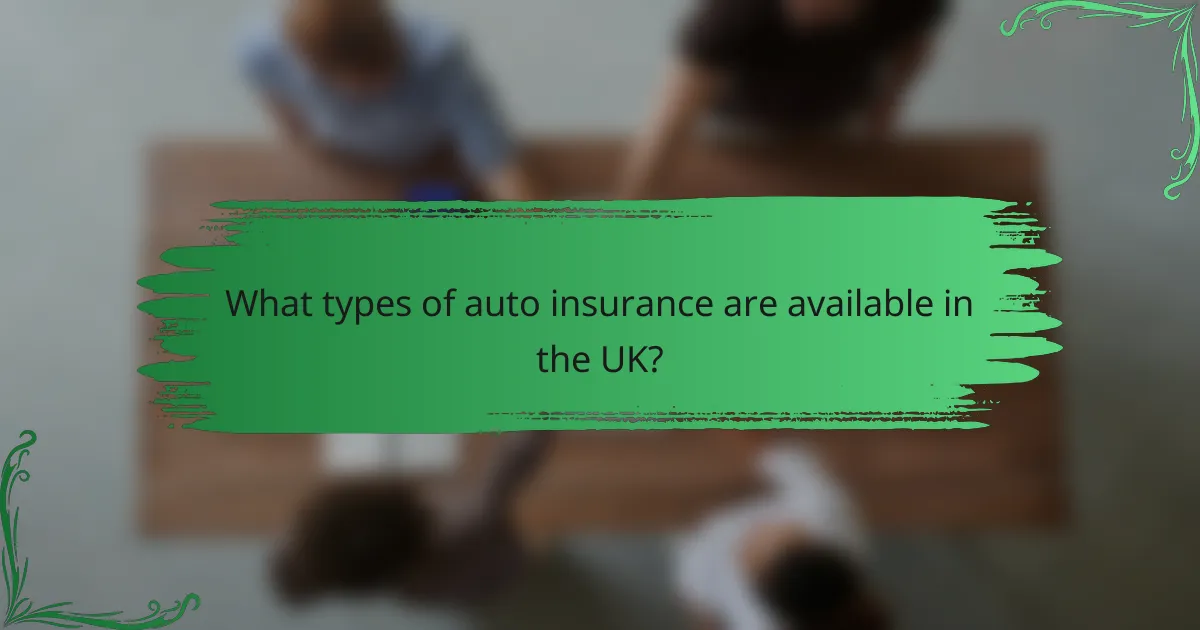
What types of auto insurance are available in the UK?
In the UK, various types of auto insurance cater to different needs, including liability coverage, collision protection, and comprehensive options. Understanding these types helps drivers choose the right policy for their circumstances and legal requirements.
Liability coverage
Liability coverage is a fundamental component of auto insurance that protects you against claims made by others for damages or injuries you cause in an accident. In the UK, it is mandatory to have at least third-party liability insurance, which covers damage to other vehicles and injuries to other people.
When selecting liability coverage, consider the limits of the policy. Higher limits may offer better protection but can increase your premium. Always review your coverage to ensure it meets your needs and complies with legal requirements.
Collision protection
Collision protection covers damage to your own vehicle resulting from a collision, regardless of who is at fault. This type of insurance can be particularly beneficial for newer or more valuable cars, as it helps cover repair costs after an accident.
When opting for collision protection, assess the cost of premiums versus potential repair expenses. If your vehicle is older or has a lower market value, you might consider whether this coverage is worth the added expense.
Comprehensive options
Comprehensive insurance provides broader coverage, protecting against non-collision-related incidents such as theft, vandalism, or natural disasters. This type of policy is ideal for drivers seeking extensive protection for their vehicles.
While comprehensive options typically come with higher premiums, they can save you significant costs in the event of unforeseen incidents. Evaluate your vehicle’s value and your risk tolerance to determine if comprehensive coverage is suitable for you.
Third-party insurance
Third-party insurance is the minimum legal requirement for drivers in the UK. It covers damages and injuries you cause to other people and their property but does not cover your own vehicle’s damages.
This type of insurance is often the most affordable option, making it appealing for budget-conscious drivers. However, it leaves you vulnerable to repair costs for your vehicle, so consider your financial situation when choosing this coverage.
Personal injury protection
Personal injury protection (PIP) is not commonly available in the UK as a standalone policy but may be included in some comprehensive plans. It covers medical expenses for you and your passengers in the event of an accident, regardless of fault.
While PIP can provide peace of mind, it is essential to review your existing health insurance coverage to avoid redundancy. If you frequently drive with passengers, consider policies that include PIP for added security.

How does liability coverage work?
Liability coverage protects you financially if you are responsible for causing damage to someone else’s property or injuring another person in an accident. It typically covers legal fees, medical expenses, and property repair costs up to the limits of your policy.
Covers damages to others
Liability coverage is designed to pay for damages you cause to others, including their vehicles, property, and medical bills. For example, if you accidentally collide with another car, your liability insurance would cover the repair costs for the other vehicle and any medical expenses incurred by the other driver or passengers.
This type of coverage does not pay for your own injuries or vehicle damage; those costs would need to be covered by your own insurance policy, such as collision or comprehensive coverage. It’s essential to understand your policy limits, as exceeding them could leave you financially responsible for the remaining costs.
Legal requirements in the UK
In the UK, having liability coverage is a legal requirement for all drivers. The minimum level of coverage mandated is third-party insurance, which covers damages to other people and their property but does not cover your own vehicle or injuries.
Drivers must ensure that their liability coverage meets the minimum legal standards, which are set to protect both the driver and the public. Failing to maintain adequate liability insurance can result in significant fines and penalties, including points on your driving license and potential disqualification from driving.
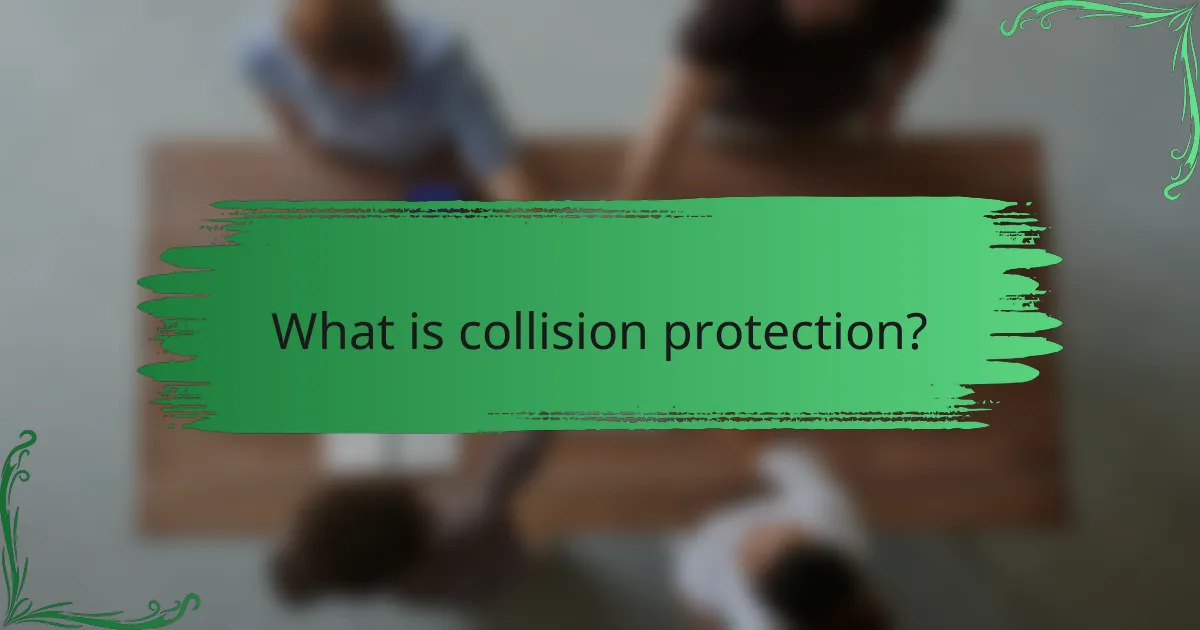
What is collision protection?
Collision protection is a type of auto insurance that covers damage to your vehicle resulting from an accident, regardless of who is at fault. This coverage is essential for drivers who want to ensure their vehicle is repaired or replaced after a collision.
Covers vehicle damage from accidents
Collision protection specifically addresses the costs associated with repairing your vehicle after an accident. Whether you hit another car or a stationary object, this insurance helps pay for the repairs needed to restore your vehicle to its pre-accident condition.
For example, if you collide with a tree and the repair costs amount to $3,000, collision coverage would help cover that expense, minus any applicable deductible. This type of coverage is particularly valuable for new or high-value vehicles, where repair costs can be significant.
Deductibles and premiums
When selecting collision protection, you will encounter deductibles and premiums. The deductible is the amount you must pay out-of-pocket before your insurance kicks in, while the premium is the amount you pay for the policy, typically on a monthly or annual basis.
Choosing a higher deductible can lower your premium, but it means more out-of-pocket costs in the event of a claim. For instance, if your deductible is set at $1,000, you will pay that amount before your insurance covers any additional repair costs. It’s important to balance your deductible and premium based on your financial situation and risk tolerance.
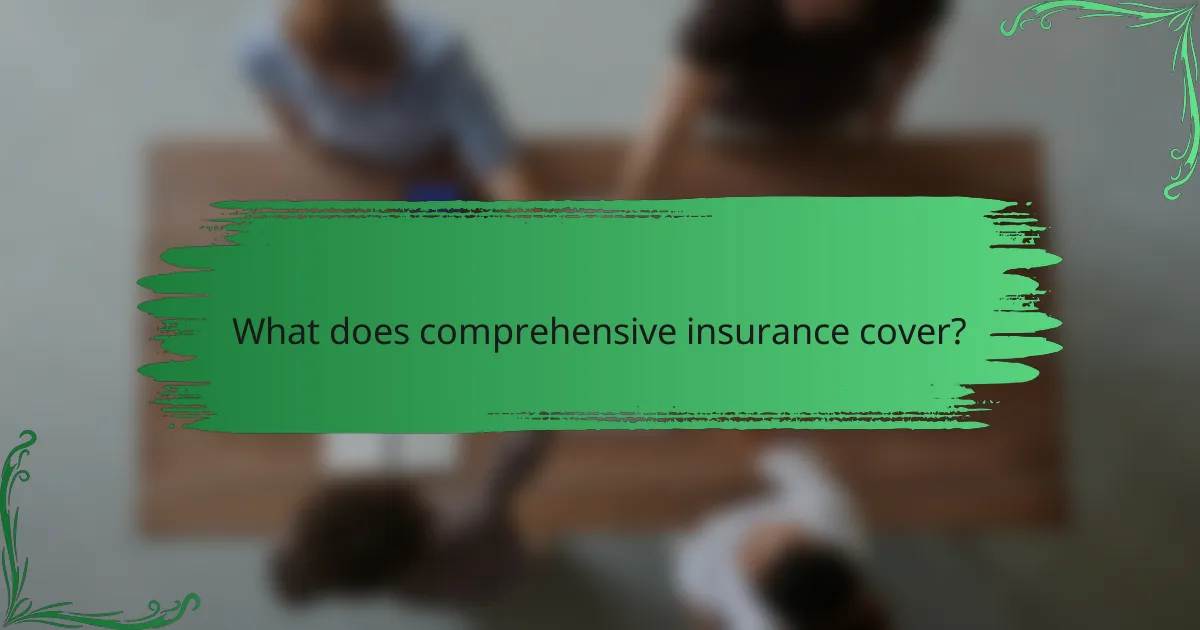
What does comprehensive insurance cover?
Comprehensive insurance covers damage to your vehicle that is not the result of a collision. This includes incidents such as theft, vandalism, natural disasters, and animal strikes.
Covers non-collision incidents
Comprehensive insurance is designed to protect against various non-collision incidents that can damage your vehicle. For example, if a tree falls on your car during a storm or if your vehicle is stolen, comprehensive coverage would typically pay for the repairs or replacement. This type of coverage is essential for safeguarding your investment against unpredictable events.
Common non-collision incidents covered include fire, flooding, hail, and damage caused by animals. These events can lead to significant repair costs, making comprehensive coverage a valuable option for many drivers.
Comparison with collision coverage
While comprehensive insurance covers non-collision incidents, collision coverage specifically addresses damages resulting from accidents with other vehicles or objects. For instance, if you hit a guardrail or another car, collision coverage would apply, whereas comprehensive would not.
Choosing between comprehensive and collision coverage often depends on your vehicle’s value and your risk tolerance. Many drivers opt for both types of coverage to ensure complete protection. It’s advisable to evaluate your driving habits and local risks to determine the right mix of coverage for your needs.

How to choose the right auto insurance?
Choosing the right auto insurance involves understanding your coverage needs and comparing options from various providers. Assess your personal requirements and budget to find a policy that offers adequate protection without overspending.
Assessing personal needs
Start by evaluating your driving habits, the value of your vehicle, and your financial situation. Consider factors like how often you drive, the age and condition of your car, and whether you have any existing savings to cover potential damages.
Liability coverage is essential for protecting against damages you may cause to others, while collision protection covers your vehicle in accidents. Comprehensive options safeguard against non-collision incidents, such as theft or natural disasters. Determine which types of coverage are necessary based on your circumstances.
Comparing quotes from providers
Gather quotes from multiple insurance companies to find the best rates and coverage options. Use online comparison tools or contact agents directly to get a clearer picture of what each policy entails.
When comparing quotes, look beyond just the premium costs. Consider deductibles, coverage limits, and any additional benefits offered. For example, some providers may include roadside assistance or rental car coverage, which can add value to your policy.

What are the benefits of comprehensive auto insurance?
Comprehensive auto insurance offers extensive protection against a variety of risks beyond just collisions. It covers damages to your vehicle from non-collision incidents such as theft, vandalism, natural disasters, and animal strikes, providing peace of mind for drivers.
Liability Coverage
Liability coverage is a fundamental component of auto insurance that protects you financially if you are at fault in an accident. It covers damages to other people’s property and medical expenses for injuries they sustain. Most states require a minimum amount of liability coverage, but higher limits are advisable to safeguard your assets.
For example, if you cause an accident that results in $50,000 in damages and your liability limit is only $25,000, you would be responsible for the remaining $25,000. Therefore, understanding your state’s requirements and considering higher limits can prevent significant financial loss.
Collision Protection
Collision protection covers damages to your vehicle resulting from a collision with another vehicle or object, regardless of fault. This type of coverage is especially important for newer or more valuable cars, as it helps ensure that you can repair or replace your vehicle after an accident.
When selecting collision coverage, consider your vehicle’s value and your deductible. A higher deductible can lower your premium, but it also means more out-of-pocket expenses in the event of a claim. Balancing these factors is crucial for effective financial planning.
Comprehensive Options
Comprehensive options provide coverage for damages to your vehicle caused by incidents other than collisions, such as theft, fire, or natural disasters. This type of insurance is essential for protecting your investment, especially in areas prone to severe weather or high crime rates.
When evaluating comprehensive options, consider the specific risks you face based on your location. For instance, if you live in a region with frequent hailstorms, comprehensive coverage can save you from costly repairs. Additionally, review your policy to understand any exclusions or limitations that may apply.
